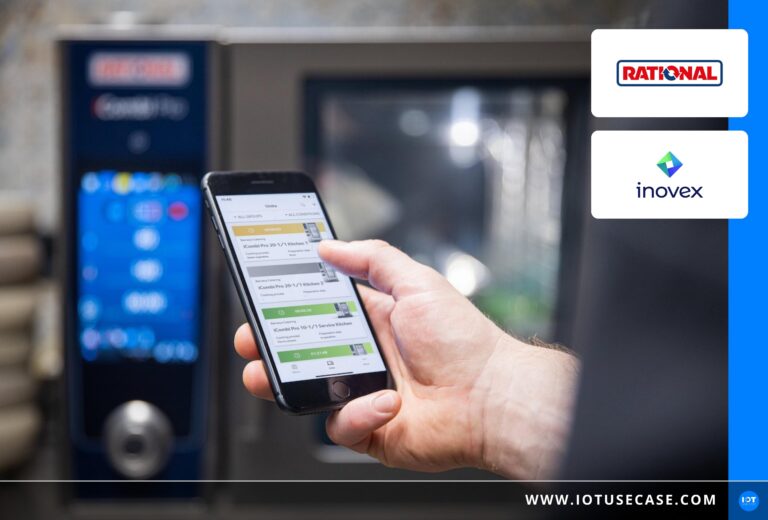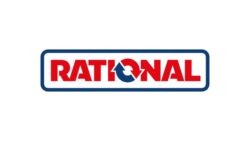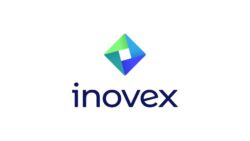Professional kitchen appliances like those used, for example, in large-scale catering establishments and food retail chains, are, in terms of their digitalization and networking, “late bloomers”. A very early digital step taken by RATIONAL in 2004 was the introduction of intelligent cooking systems known as “combi steamers”, which can cook autonomously – the user enters the desired cooking result and the product is then cooked automatically. Today, combi steamers still form the basis for digitalized solutions in catering kitchens, where robustness, productivity, availability, and reliability are extremely important.
Vision: IOT PLATFORM FOR PROFESSIONAL DEVICES
These devices were, however, not yet centrally networked, although customer demands for standardization, central quality assurance, and cost reduction were becoming increasingly clearly formulated. RATIONAL alone has sold more than 100,000 combi steamers worldwide, which customers have been managing using software installed on local desktops – with all their associated media gaps. . Managing these devices through a modern IoT system which eliminates these gaps and provides customers with functions such as remote control, over-the-air updates, and remote monitoring and reporting was, therefore, the project vision right from the very outset.
Product Discovery
Against this backdrop, RATIONAL commissioned a project team in 2015 to design and implement ConnectedCooking, a global, cloud-based IoT platform for professional kitchens. . Initially driven by product management, subject matter experts from service, application research, and development got together to determine the basic requirements. They did this in the form of agile product discovery sessions – in open, creative workshops involving real customers.
Customers were also involved throughout the entire course of the project, and live tests using initial versions of the system provided important input. Customer-oriented development was already an established principle for RATIONAL, and it has now been further expanded by agile methods. New functions are not developed in their entirety initially, but instead are tested and evaluated by customers at the earliest possible stage of development. For ConnectedCooking, agility is now elementary and a »recipe for success« …
Objective
The initial focus was on using the digital platform to simplify existing processes – installing updates, automating documentation, managing and maintaining devices, and optimising their use. The IoT platform must therefore provide basic functions such as exchanging (machine-to-machine) messages, and remote programming, maintenance, control, monitoring, and error checking.
In the second step, additional ideas emerged from the digitalization process, including calculating and planning menus based on the appliance specifications and the ingredients desired, opening customer feedback channels, or offering cooking as a service. Some of these possibilities have already been realized, while others are still being evaluated.
Implementation: DIVISION OF LABOUR BETWEEN RATIONAL AND INOVEX
Networking the devices required both an adapted version of the device software (embedded Linux) and the networking platform itself. This consists of cloud backend and frontend components. RATIONAL adapted the device software themselves, while inovex was commissioned as a development partner for the cloud components and the operation of the platform.
Features and Customer Benefits
The ConnectedCooking service has now been in operation for about four years. Thanks to the new digital access options, the appliances’ statuses can be determined, new recipes and cooking methods can be automatically uploaded to them, and service messages can be sent to service partners. All the cooking processes performed are automatically logged in standardized, HACCP-compliant documentation for later inspection, a feature which guarantees hygiene and safety for appliance customers. Access via the cloud has also made it easy to manage multiple kitchens at different locations.
Major customers with large numbers of cooking appliances installed can now transfer new software or new recipes to their appliances at the touch of a button. Before ConnectedCooking, this was possible only via USB sticks. This function alone means a significant cost reduction. For a customer who operates about 800 devices in the UK, the update costs per year previously amounted to about €120,000. An additional €125,000 in savings result from using the ConnectedCooking remote maintenance module. Around 25% of service calls are processed remotely, and in approximately 40% of assignments, automatic notifications mean that the precise reason for the error is known before a technician is deployed. As the features of ConnectedCooking have so far been offered to customers at no extra charge, RATIONAL has been able to significantly increase customer satisfaction and loyalty through the IoT platform.
Technical Details of the IoT Platform: MICROSERVICES ARCHITECTURE
The technical basis of ConnectedCooking is an MQTT-based platform with a very lightweight, scalable architecture. The choice of MQTT as the IoT protocol was made following comprehensive consideration and evaluation of the protocols available at the time, each of which differed greatly in its primary purpose and its strengths – and, of course, in its weaknesses. MQTT is designed to deliver good performance even when data transfer is delayed or bandwidth is limited. It is not without reason that MQTT is one of the most popular protocols in today’s Internet of Things.
In accordance with the principles of iterative, needs-based development, this messaging network serves as a basis for a variety of microservices. These, in turn, provide customers with the appropriate features for managing their individual devices. inovex designed and implemented both intuitive web and mobile (iOS and Android) frontends to serve as user interfaces, and the entire software management process was fully automated right from the outset using continuous integration and continuous delivery pipelines.
The technologies used – mostly open-source components – are robust and resilient while still offering the flexibility required to react appropriately to the requirements of future situations. All technological decisions were based on maximising customer-friendly functionality and usability.
IoT Infrastructure
To operate this solution, an IoT infrastructure was required, and this was also planned and implemented by inovex. The MQTT layer, the database layer, and the application layer are all operated on this infrastructure. We first held a collaborative architecture workshop in which we determined all the framework parameters and objectives and outlined the basic MQTT-optimized operating infrastructure. In designing the solution, it was important to keep it as lightweight and bandwidth-friendly as possible and to incorporate quality features such as load balancing and high availability. In addition, as with any modern infrastructure, the maximum level of automation using CI/CD pipelines was required in order to roll out deployments and provisioning of any type and size at the push of a button. We used a scalable architecture based on Linux, Terraform, Puppet, and Gitlab CI/CD to implement these features to precise specifications. The resulting infrastructure is capable of supporting highly differentiated demands, such as requirements from regions outside Europe and those resulting from interactions with cloud providers such as Terraform and Amazon Web Services China.
Operation of the Platform
Since it went live, the IoT platform has been operated by inovex in DevOps mode on the inovex Cloud. inovex Cloud Services provided include incident, problem, and RCA management; lifecycle and configuration management; display of specific platform and application metrics; backup, monitoring and patch management, and log aggregation. Everything is coordinated through an operations manager provided by inovex. This manager serves as a central point of contact for the customer, discusses all requests and problems with them, and manages the implementation of the work.
Conclusion and Outlook
Agile cooperation amongst an interdisciplinary team of experts from RATIONAL and inovex ensured that the vision of building and globally rolling out ConnectedCooking was implemented successfully, providing an innovative and highly beneficial IoT platform for catering kitchens. While ConnectedCooking still exclusively networks and facilitates remote maintenance for RATIONAL appliances via its cloud-based solution, it is also capable of integrating other appliance manufacturers. This could mean the connection not only of food preparation equipment, but also of other technical resources in the catering value chain, such as refrigerators.
Technology Stack
- Angular
- rxjs
- SASS
- yarn
- rxjs
- Tailwind
- Cypress
- Swift
- rxSwift
- Alamofire
- Kotlin
- moshi
- rxjava
- Koin
- MQTT
- emq
- Spring Boot
- WebSockets
- Stomp
- elasticsearch
- Spring Data
- Spring Security
- Hystrix
- prometheus
- Grafana
- Patroni
- HA-Proxy
- Gitlab-CI
- RabbitMQ
- Sentry





